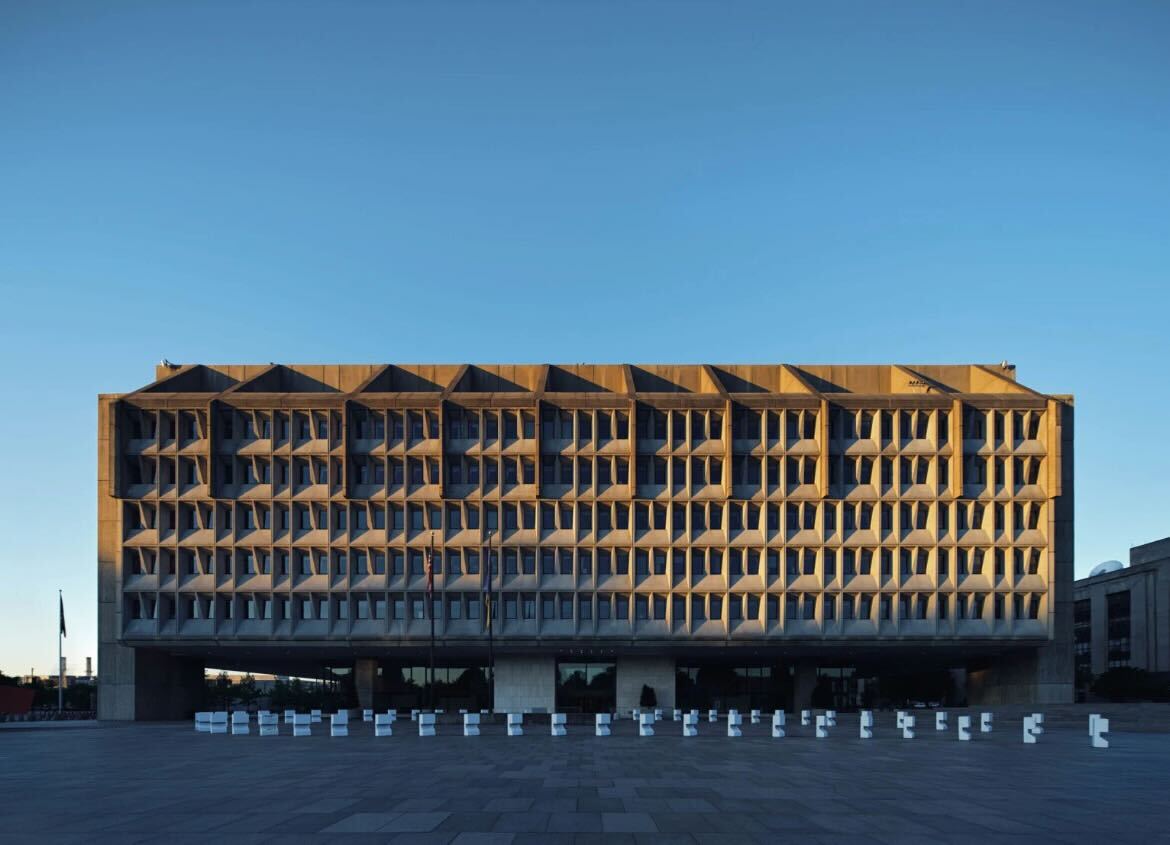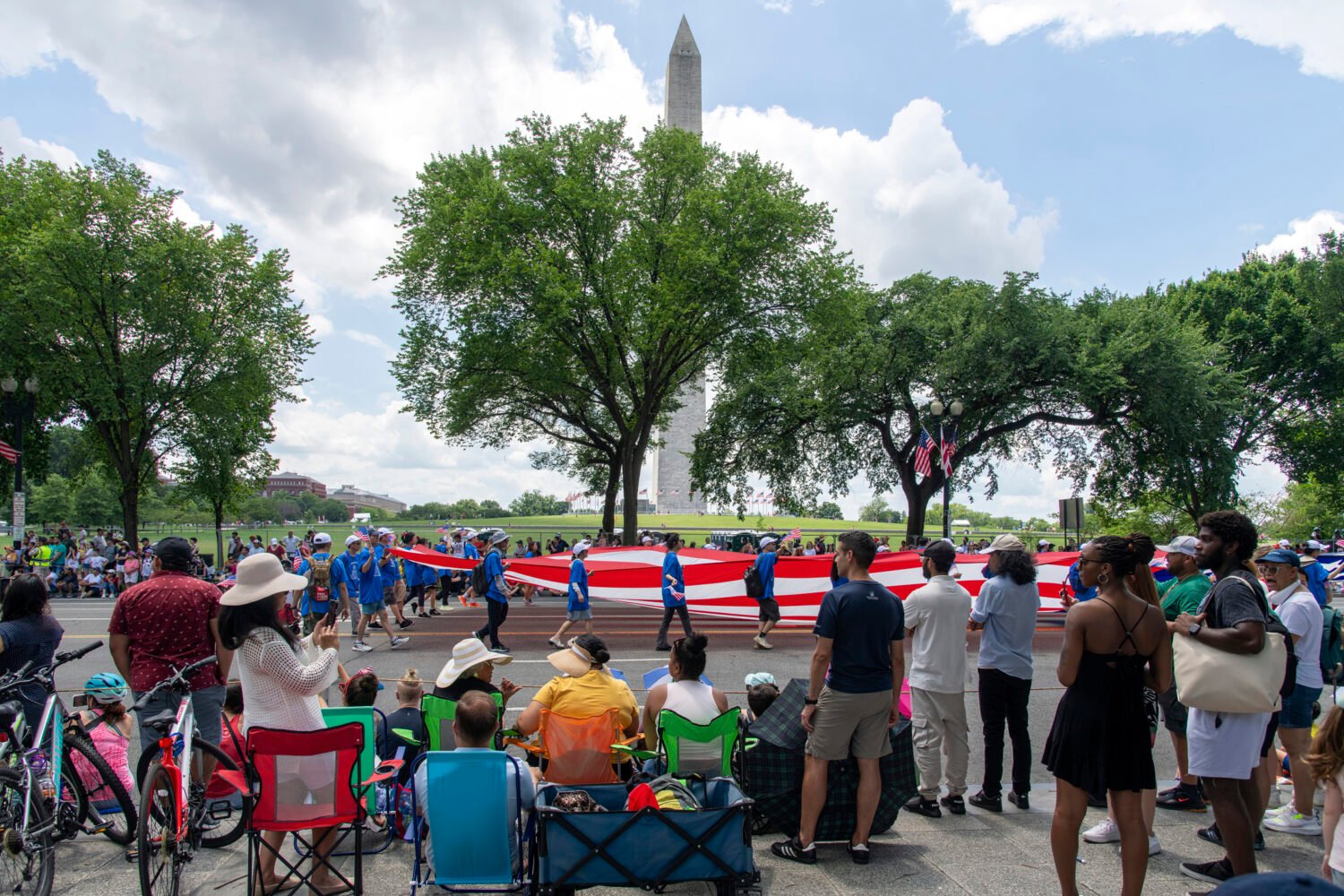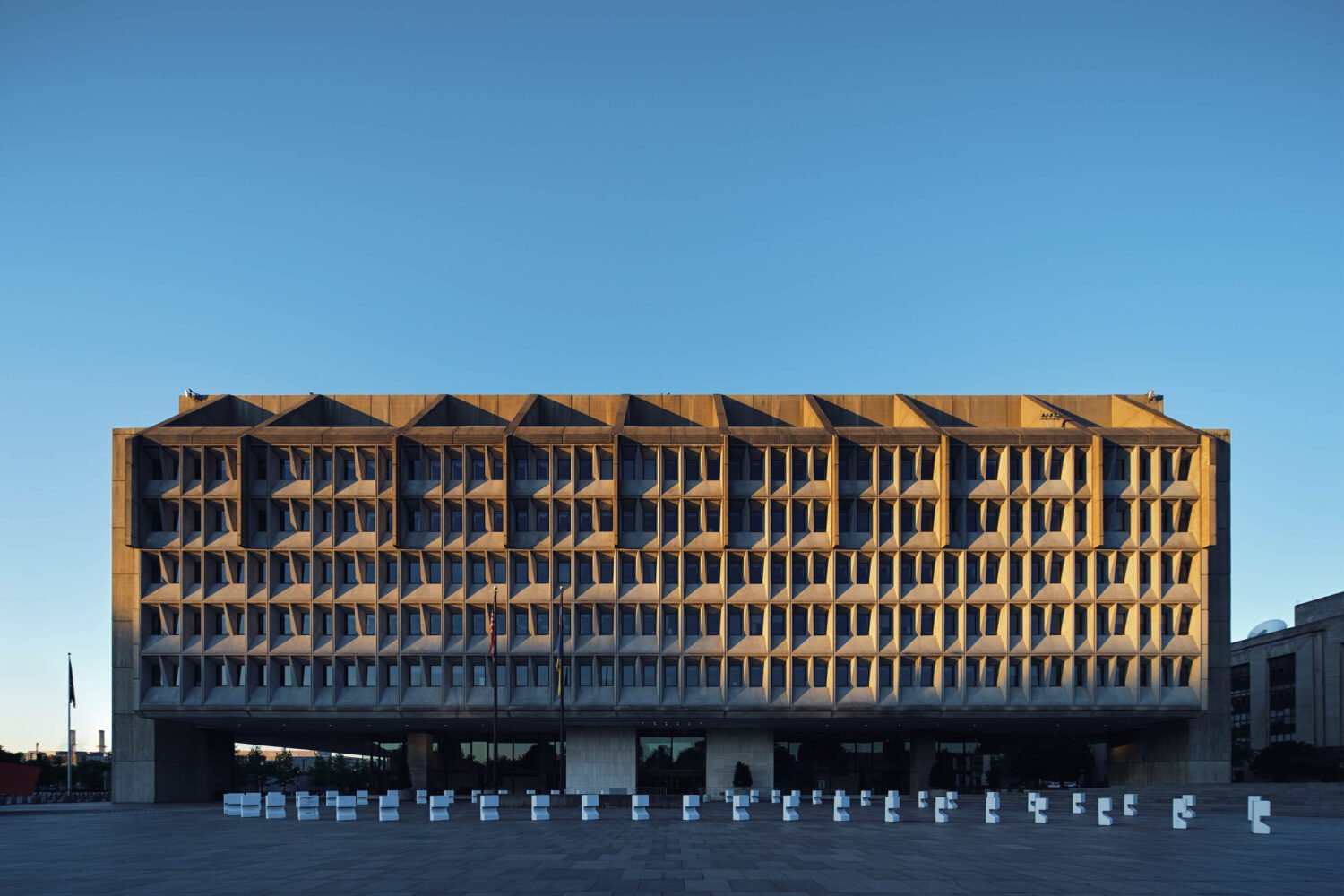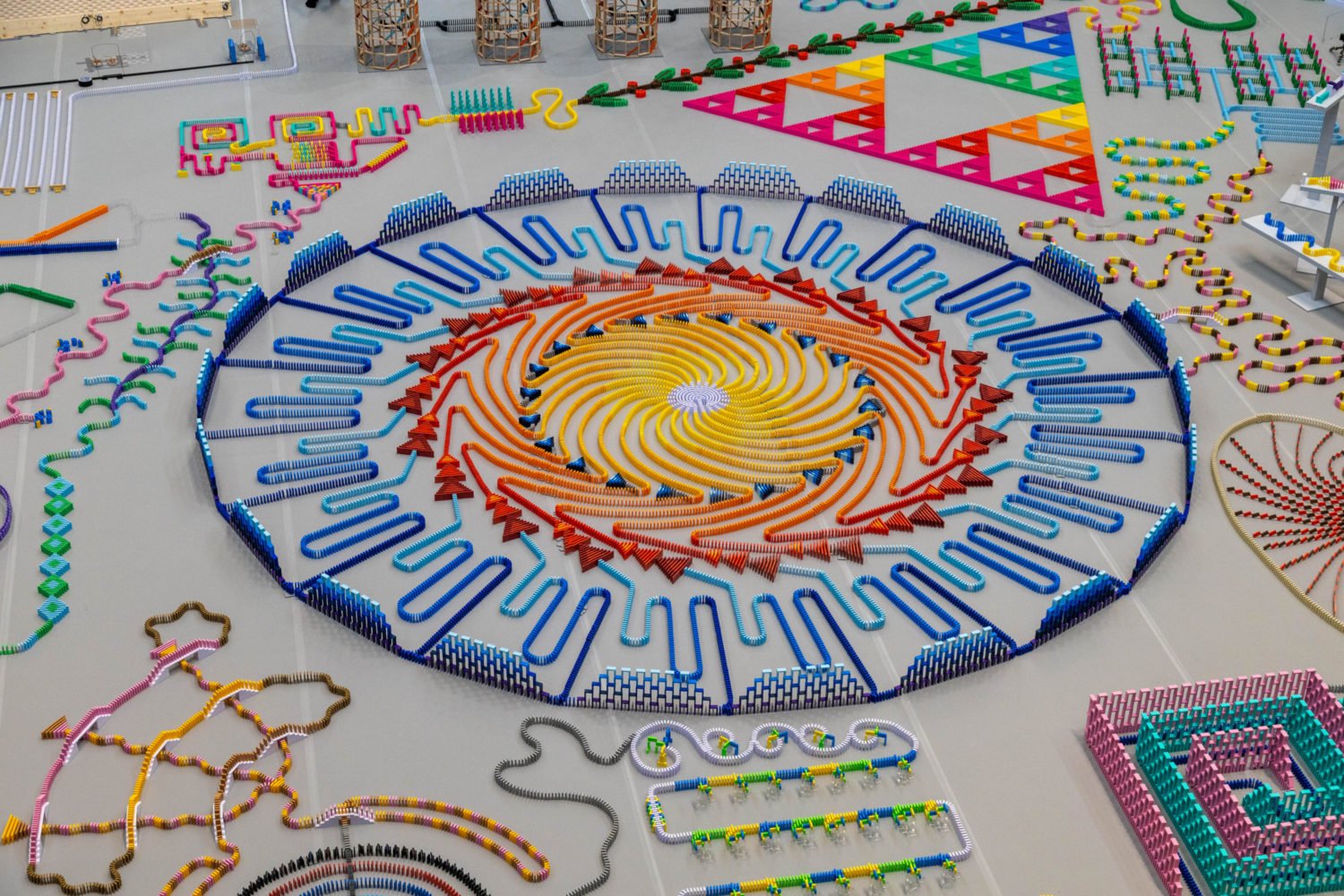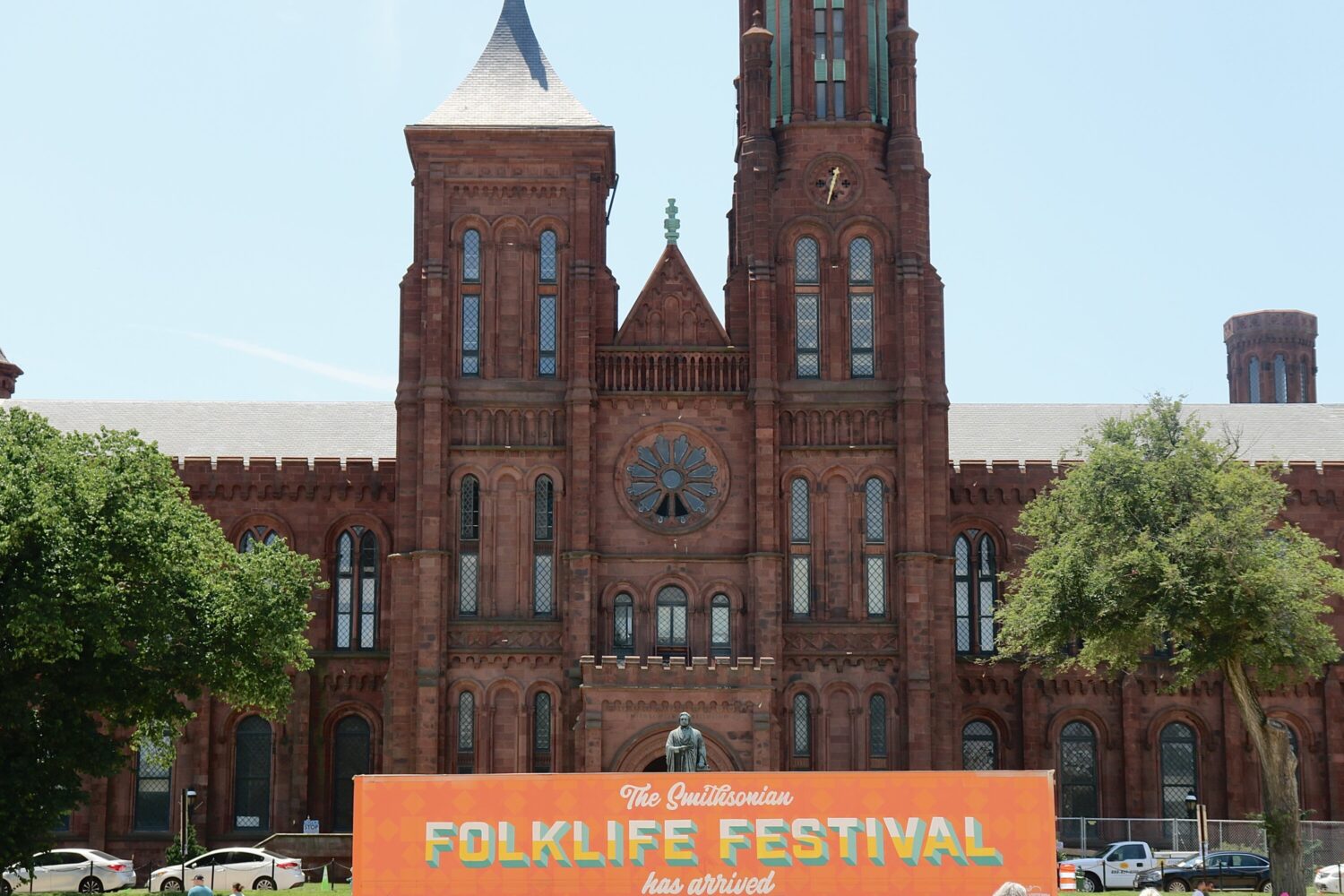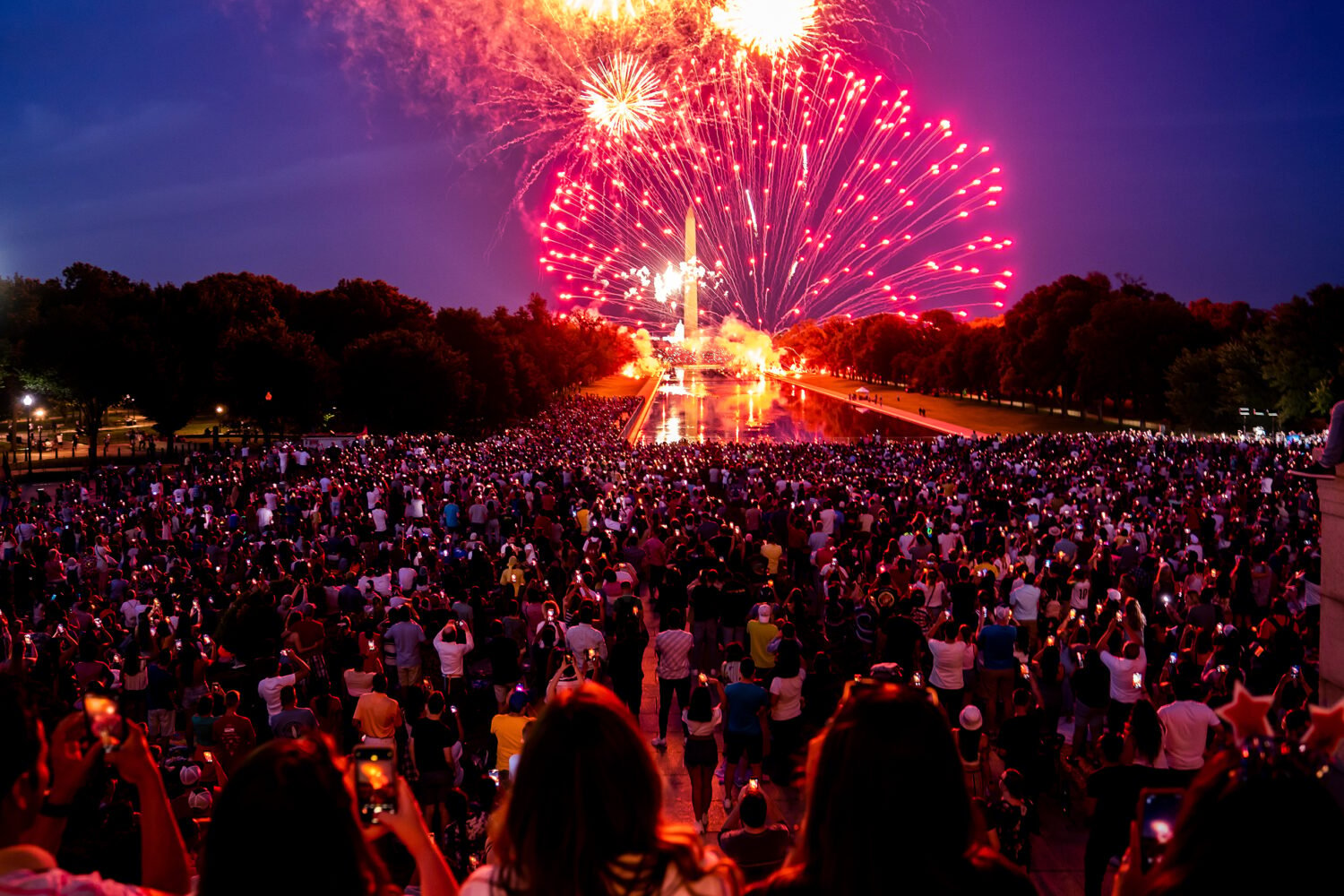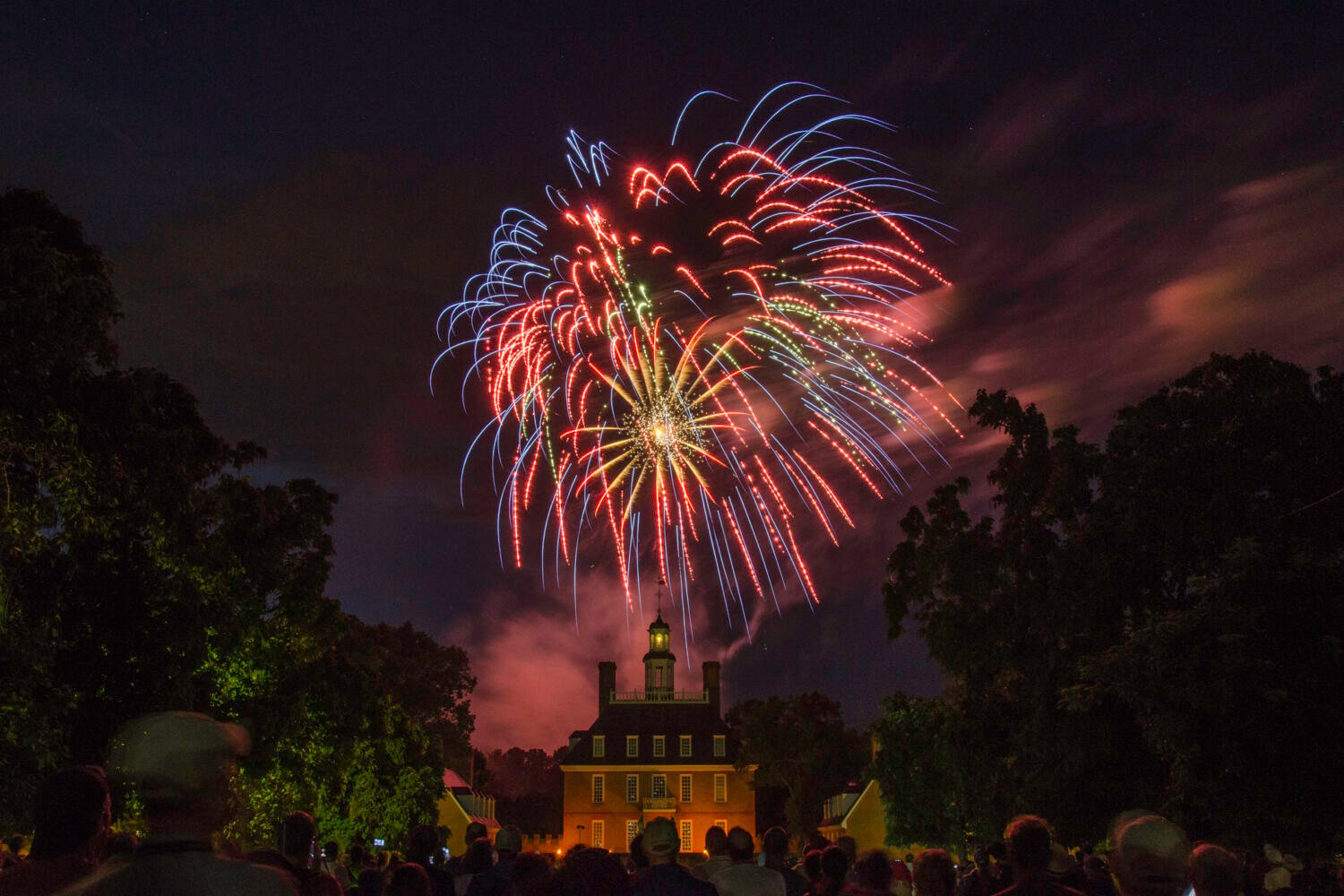“Who doesn’t like brutalism?” Angela Person asks at the beginning of a tour of Capital Brutalism, a new exhibit at the National Building Museum. Only a few hands go up. “This tour’s for you,” Person replies. Usually, she says, a lot more people cop to hating the architectural style.
The DC area makes it particularly easy to dislike brutalism, the post-World War II style that resulted in large buildings, often constructed with exposed concrete. That’s because, thanks in part to the Redevelopment Act of 1945—which, besides displacing lots of people in low-income areas, called for inexpensive government buildings whose occupant agencies weren’t easily identifiable—there are lots of examples of the style to be found here. Capital Brutalism zeroes in on several local examples of brutalism, from the relatively popular (the Hirshhorn Museum and Sculpture Garden, Washington’s Metro stations) to the mostly tolerated (the Robert C. Weaver Federal Building that houses the US Department of Housing and Urban Development, Georgetown University’s Lauinger Library) to the widely hated (the J. Edgar Hoover Federal Bureau of Investigation building on Pennsylvania Avenue).
For anyone who loves the style (we do exist!), the branding is admittedly suboptimal: Brutalism refers not to the hulking nature of many of these buildings but rather derives from béton-brut, a French term for raw concrete—but just try telling that to someone trying to find an entrance to L’Enfant Plaza. “The scale is sometimes really daunting for people to really appreciate,” Cole says.
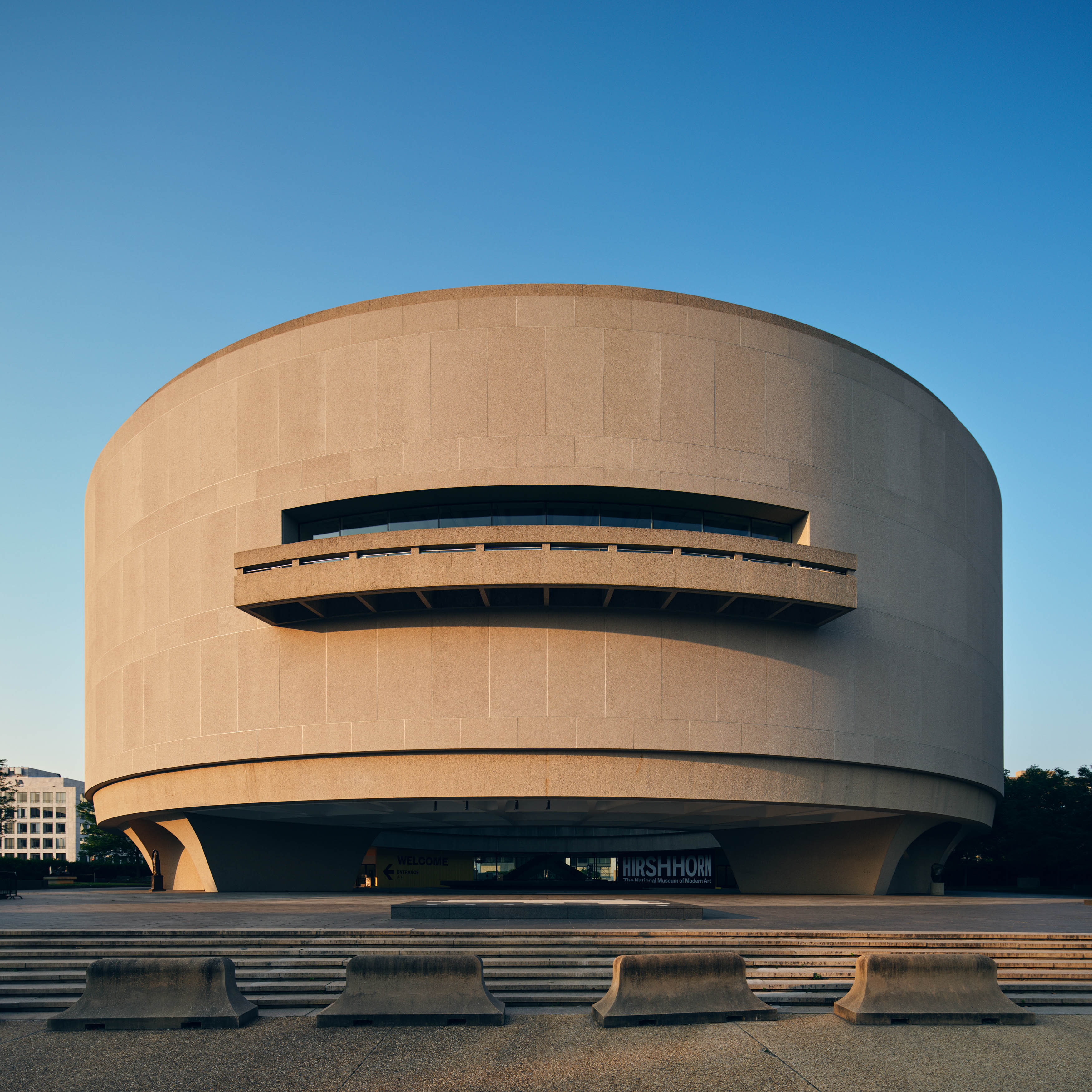
The LA-based Cole and Person, an associate professor of architecture at the University of Oklahoma who previously lived in DC, originally planned to collaborate on a coffee-table book about brutalism. That project morphed into an exhibit called “Brutal DC” at the Southern Utah Museum of Art, from which “Capital Brutalism” derives. (Based on an unscientific poll of the Washingtonian newsroom, the building museum could possibly have sold a lot of T-shirts had the exhibit kept its original name.) The exhibit presents Cole’s gorgeous photos of its subjects alongside artifacts like 3-D printed renditions of concrete molds used on some of the buildings, as well as some architects’ ideas for reimagining them.
Take Marcel Breuer’s Humphrey Building, home to the US Department of Health and Human Services, for example. It was one of the first buildings in the District to take advantage of “air rights” so it could be built over the Third Street tunnel off of I-395, and Person notes it almost appears to float. The DC-based firm BLDUS recasts it with a pyramidal top and a ten-story playground, home to the US “Department of Play.” Students at the University of Nevada, Las Vegas imagined breaking Georgetown’s John Carl Warnecke-designed “Lau” library into four smaller buildings based on Jesuit principles. There’s no such proposal for Harry Weese’s Metro system—”I think it’s beautiful,” Cole says. “I wouldn’t want to change it at all.”
Capital Brutalism runs through February 17, 2025, at the National Building Museum.
Correction: This post originally incorrectly attributed the reimagining of the Lauinger Library to students at Georgetown University.

